Today we are benchmarking dual Intel Xeon E5-2430L processors. We have previously reviewed the Intel Xeon L5530 and L5630 processors based on the Intel LGA1366 chipset. The Intel Xeon E5-2430L processor uses Intel’s newer LGA1356 socket. We published our dual Intel Xeon E5-2430L Windows benchmarks a few months ago but are transitioning to our Linux benchmark suite. We decided to revisit the Intel Xeon E5-2430L platform this time with the new Linux test suite so we can have that platform in our results.
Dual Intel Xeon E5-2430L Linux Test Configuration
For this round, we are using a similar dual Intel Xeon E5-2430L test configuration at to what we used last time. As a low cost and low power configuration option this is a primary target market for the Xeon E5-2430L. The change we made due to feedback was to change the RAM configuration. The Linux test bed is using 96GB of DDR3 RDIMMs. This is a clear reason to use the Intel Xeon E3-2430L series over the lower end Haswell Xeon series. We use many of the low power chips in the labs and they are great for applications like web hosting.
- CPUs: 2x Intel Xeon E5-2430L
- Motherboard: ASUS Z9NA-D6
- Memory: 6x 16GB 1600MHz RDIMMs
- SSD: Corsair Force3 120GB, OCZ Vertex 3 120GB 2x OCZ Agility 3 120GB
- Power Supply: Corsair AX850 850w 80 Plus Gold
- Chassis: Norco RPC-4220
- Operating System: Ubuntu 12.04 Server and Windows Server 2008 R2
Dual Intel Xeon E5-2430L Linux Benchmarks
We are utilizing our new Linux benchmark suite and Ubuntu Server 12.04 LTS to take a look specifically at the compute performance of these instances. We now have a fairly broad range of Amazon and Rackspace cloud instances benchmarked along with many dedicated platforms. One may see data bars where there is no system sitting at the maximum value. This is because we tend to benchmark ahead of publication so there are many dedicated platforms benchmarked but not published yet.
Hardinfo Performance
hardinfo is a well known Linux benchmark that has been around for years. It tests a number of CPU performance aspects.
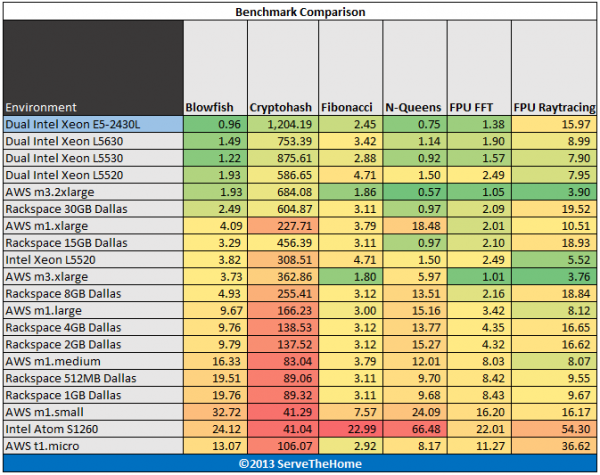
Here we see a general trend for the dual Intel Xeon E5-2430L to be at or near the top of the charts in most benchmarks. As we add more dual processor benchmarks this will fill out a bit more.
UnixBench 5.1.3 Performance
UnixBench may be a defacto standard for Linux benchmarking these days. There are two main versions, one that tests single CPU performance on that tests multiple CPU performance. UnixBench segments these results. We run both sets of CPU tests. Here are the single threaded results:
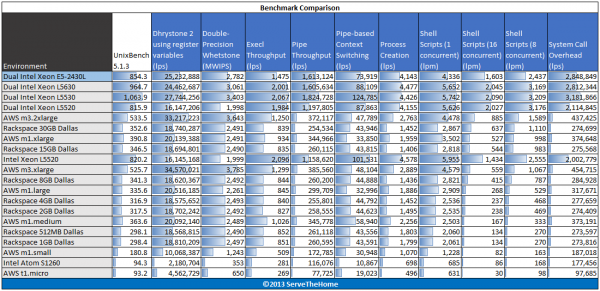
In terms of single threaded performance, the Intel Xeon E5-2430L is very close to its L5630 and L5530 brethren. This is something we would expect given the clock speeds involved.
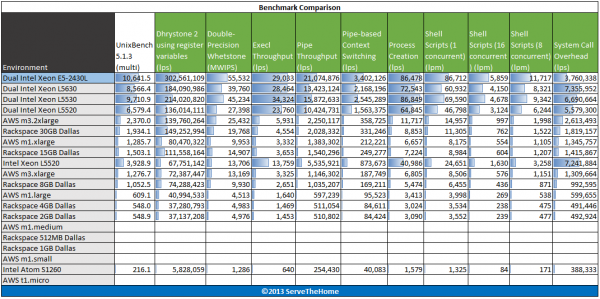
In terms of multi-threaded UnixBench performance the dual Intel Xeon E5-2430L performs very well, showing significant improvement over previous generation processors.
c-ray 1.1 Performance
c-ray is a very interesting ray tracing benchmark. It provides both consistent results and some clear separation. Ray tracing is generally a great multithreaded CPU benchmark. For this test we use both a simple 7500×3500 render and a more complex 1920×1200 render. Here are the results:
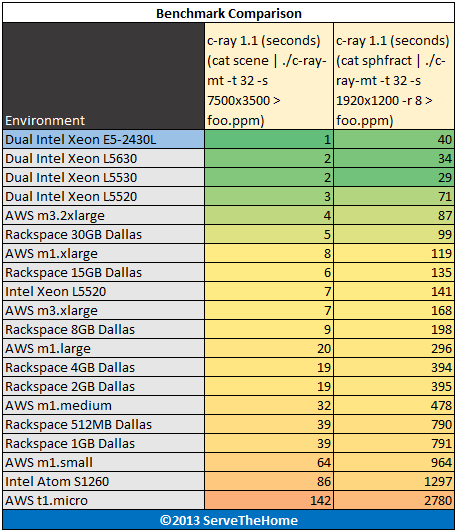
When originally creating the Linux benchmark suite, I mentioned that I started to find systems that did our first test in about a second. The dual Intel Xeon E5-2430L was one example. The Sandy Bridge-EP chips bump up against the benchmark’s ability to scale until we move to a more difficult render.
Crafty Chess Performance
Crafty is a well known chess benchmark. It is also one where we saw issues last time with the Phoronix Test Suite and running on ARM CPUs. Here are the Crafty Chess results from simply running “crafty bench”:
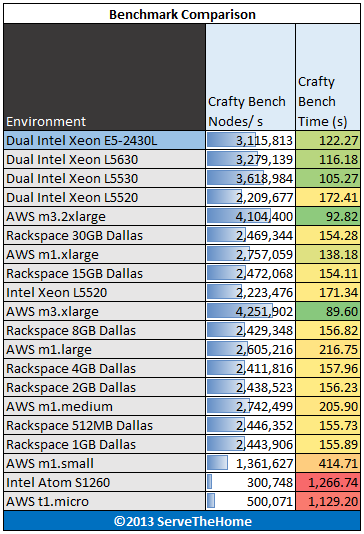
This is another area where the dual Intel Xeon E5-2430L system performs well. We can see it is posting a strong result.
Phoronix Test Suite Performance
We are using four tests from the Phoronix Test Suite: pts/stream, pts/compress-7zip, pts/openssl and pts/pybench.
- STREAM by John D. McCalpin, Ph.D. is a very well known memory benchmark benchmark. S
- 7-zip compression benchmarks were a mainstay in our Windows suite so we are including it again on the Linux side as a compression benchmark.
- The pts/openssl benchmark is very dependent on the CPU architecture being used
- Python is a widely used scripting language and pyBench is a nice single-threaded Python benchmark.
Here are the results of the Phoronix Test Suite benchmarks:
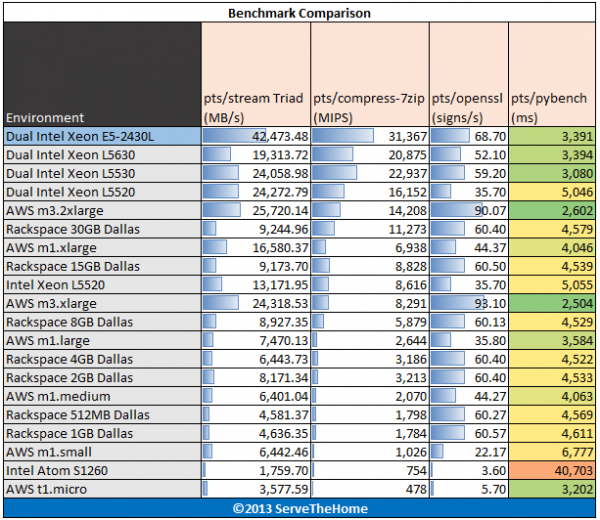
Here we again see solid results. We will be adding more higher-power dual processor systems to the mix shortly along with the Intel Xeon E3-1200 V1, V2 and V3 series processors.
Conclusion
This is one of those interesting times when we can see three chips showing incremental updates. The Intel Xeon E5-2430L overall performs a bit better than its predecessors, although not necessarily in every benchmark. A key impact of the Intel Xeon E5-2430L platform is the increased DIMM slot capacity and PCIe 3.0 connectivity over the previous generation Xeon L5530 and L5630 parts as well as the Intel Xeon E3 lineup. One other important factor is that the Intel Xeon E5-2400 series can utilize the Intel C600 series chipset to inexpensively add additional SAS/ SATA ports for storage applications. Overall, the dual Xeon E5-2430L configuration performed about where we would expect, and that is plenty for many applications.

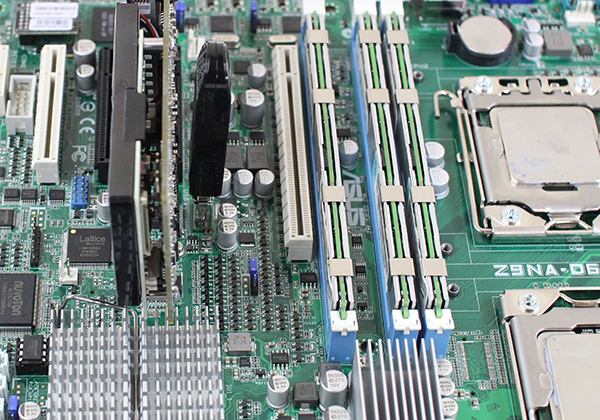



Patrick, I believe you meant LGA2011. “The Intel Xeon E5-2430L processor uses Intel’s newer LGA1356 socket.”
Hi Spyder. The Intel Xeon E5-2430L is not a LGA2011 part. Intel has two sockets for their current E5 generation parts and both were released at the same time. So in the E5 world, both the LGA1356 and LGA2011 are current generation sockets.